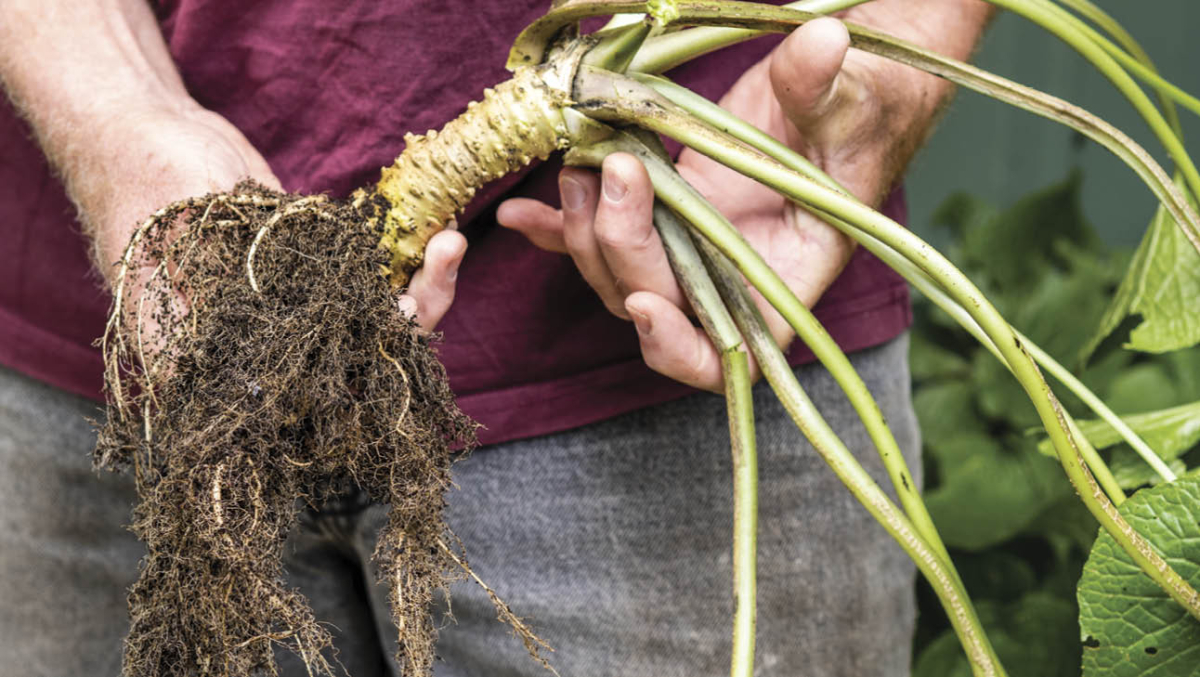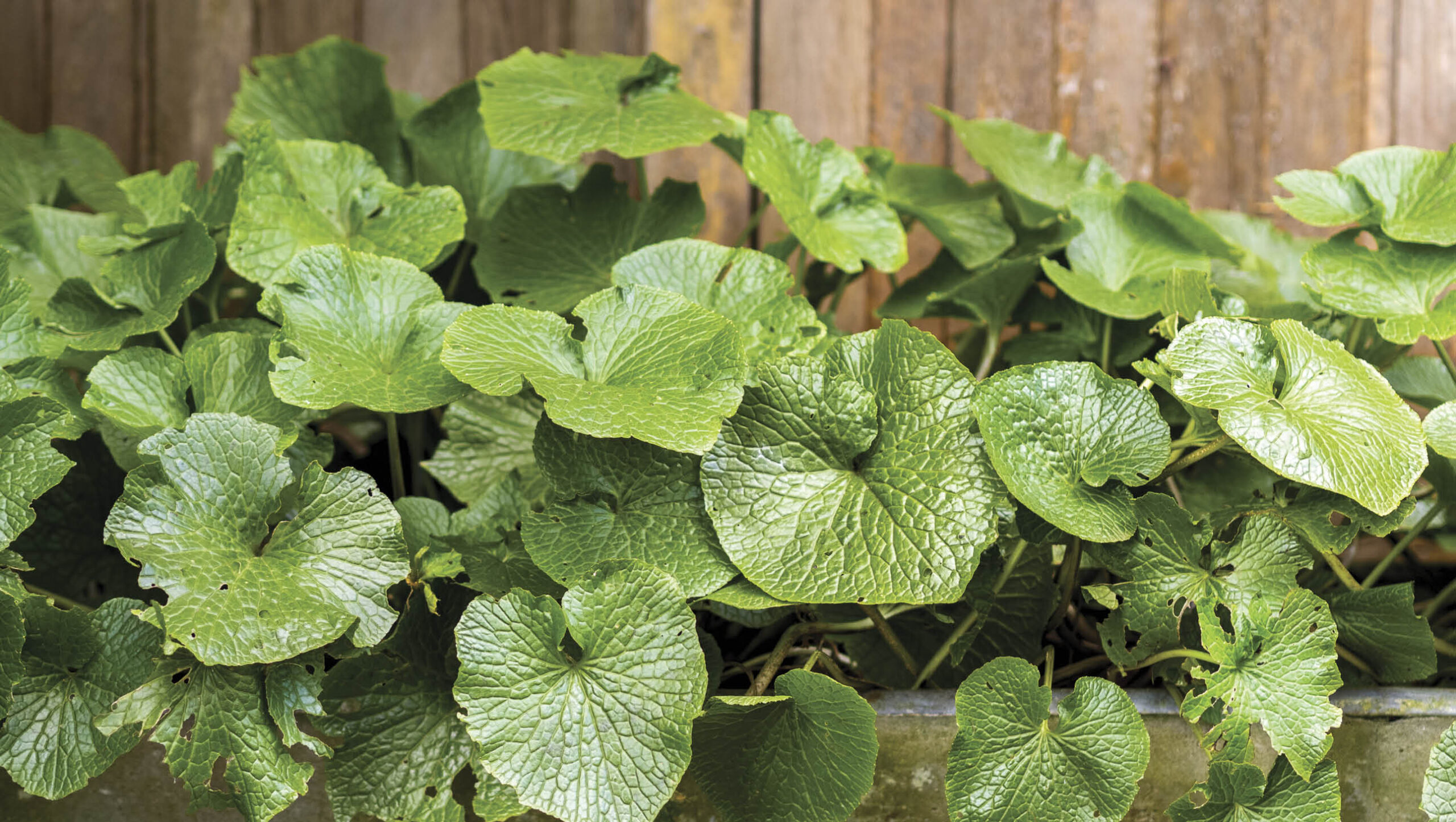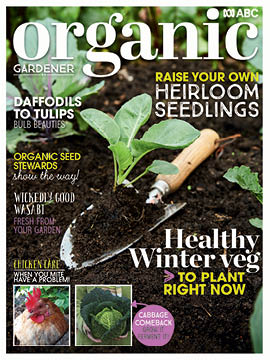Grow your own wasabi
2022-04-14T03:34:03+10:00
Growing wasabi means you have this spicy food flavouring ready to be harvested in your own backyard
Wasabi (Eutrema japonicum syn. Wasabia japonica) is in the brassica family, related to rocket, mustard and watercress. However, wasabi ‘roots’ are actually above-ground rhizomes that grow over 12–30 months.
The wasabi plant’s natural habitat is along moist, shady creek banks in the mountainous valleys of Japan – a pointer to how to treat them. Commercially, they’re grown in gravelly riverbeds with shade cloth overhead, while smaller crops are in soil.
Two varieties are commonly available here. Bright green ‘Daruma‘ is more disease-resistant and tolerates warmer climates, whereas ‘Mazuma’ has purple tints and takes a little longer to mature but stores longer.
The right spot
Choosing the right microclimate for your wasabi is crucial, and that depends on local conditions. If a little spring burbles in a shady corner of your garden, you have the perfect spot, but few of us are that lucky! Wasabi prefers dappled shade, or at least 75 per cent shade cloth. The warmer your climate, the less sun plants tolerate – once young plants wilt, they die; older ones may recover but are set back.
To determine the best microclimates in my garden, I placed pots with young offsets in several locations. I lost those in solid shade from a building, where it was cool but too dark. A shady site exposed to wind failed, too. My goldilocks spot is under an oak beside a shed, providing shade in summer, bright indirect light in winter, and complete protection from wind.

Containers
Unsealed terracotta that cools roots through evaporation is ideal. Ceramic and concrete also work well: my plants thrive in an old concrete laundry trough that stays cool throughout summer. Plastic pots are fine for propagating offsets, before transplanting them into larger containers.
A large container is most convenient. Wine barrels dry out and disintegrate when used for the average pot plant but they are perfect for wasabi, which is kept moist year-round. About eight plants fit in a barrel.
Some people stand pots in water, but wasabi prefers flowing, not standing, water. Wicking beds with free-draining media reportedly work very well, as do hydroponic systems.
Growing media and fertiliser
Many people grow wasabi in free-draining potting mix with a neutral pH, but it must hold sufficient moisture to stay wet between waterings. This is the simplest way.
However, I grow mine in an old laundry trough with a 3:1 mix of fine coir:perlite. At the bottom of the trough is a long, plastic grate to maximise drainage and prevent the potting media blocking the small plughole. For containers with plentiful smaller holes, this won’t be necessary. Above the grate is a 5cm layer of expanded clay balls, also to improve drainage.
I then fill the trough with the coir/perlite mix. A final 5cm layer of expanded clay balls covers the surface of the mix to reduce disease.
Although a fertiliser with equal parts nitrogen, phosphorous and potassium is recommended for wasabi, I’ve used balanced organic fertilisers slightly higher in nitrogen than potassium, and lower in phosphorous. Pelletised or well-rotted chicken manure, supplemented with a little sulphate of potash works, too. I generally sprinkle a little of whatever is on hand into the trough in early spring, summer and autumn at about half recommended strength: wasabi is very efficient at extracting nutrients.
Perlite, coir and fertilisers are readily available at garden centres, while expanded clay balls can be found at hydroponics shops and online.
Planting and watering
In any but the hottest season, plant out potted specimens to the same level as in the pot. Plant offsets 30cm apart and just deep enough to be secure. Water in well, rather than firming or compacting the potting mix around them.
I set watering for these plants daily between spring and autumn, and completely off during winter when it’s wet – alter to suit your climate. Adjustable microjets or drippers are preferable to sprays, so foliage stays dry and to minimise fungal disease. Set irrigation so that water runs out of the bottom drainage holes for about 20 seconds: this helps flush and oxygenate the medium.
To find our more about growing your own wasabi, including how to use it in your kitchen, get our Autumn 2022 issue (OG 133), click on cover to find out how to get your copy.







